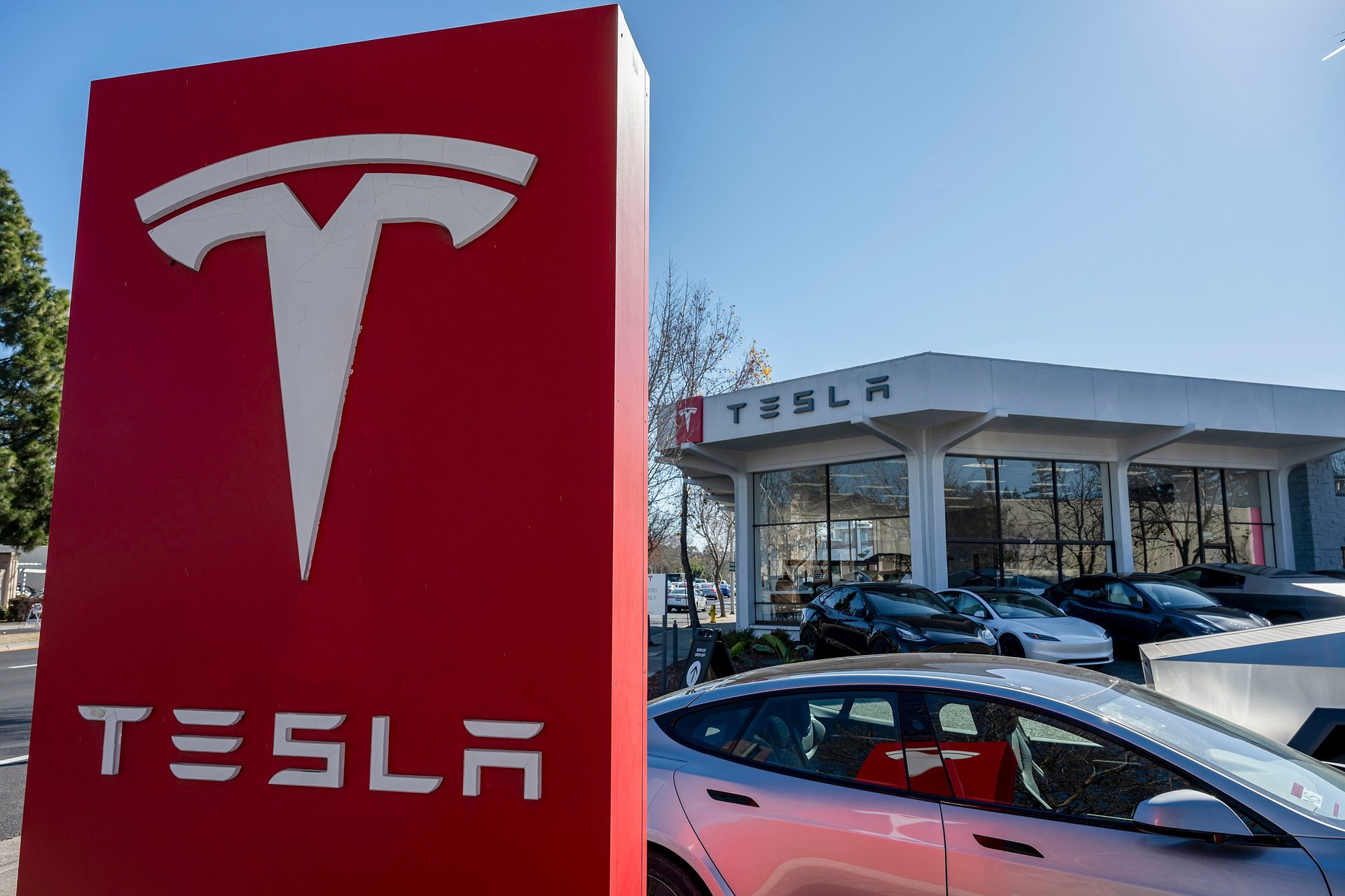Tesla earnings miss the mark — but the stock rises anyway
Elon Musk's company expects its EV business to "return to growth" in 2025

Tesla (TSLA) shares rose despite fourth-quarter revenue and other metrics falling short of Wall Street expectations.
Suggested Reading
The Austin, Texas-based electric vehicle maker reported fourth-quarter revenue of $25.7 billion, up 2% compared to last year’s $25.2 billion. But analysts had expected $27.2 billion, according to estimates compiled by FactSet (FDS).
Related Content
Automotive revenue fell by 8% during the September to December quarter to $19.8 billion but still accounted for the vast majority of Tesla’s income. Sales grew year-over-year but failed to meet Wall Street’s expectations and push Tesla over the finish line to reach its goal of 1.8 million units sold, which would have matched 2023's deliveries.
Tesla said its energy generation and storage business made a little more than $3 billion for the fourth quarter, up 113% from $1.4 billion last year. It reached a new quarterly record for the business last quarter, and the company expects to begin ramping up work at the newly-finished Megafactory Shanghai. Tesla’s services and other revenue divisions made $2.8 billion, 31% higher compared to $2.1 billion a year earlier.
Earnings per share came in at 73 cents, less than the 77 cents per share as expected by Wall Street and 71 cents per share last year. Operating income was $1.58 billion, a 23% decrease year-over-year; analysts had expected around $2.7 billion.
Tesla stock was down by more than 2% when markets closed Wednesday before popping more than 5% after earnings were reported. The stock has surged in the wake of President Donald Trump’s electoral win, although shares have fallen in the days following his inauguration.
In October, Musk forecasted sales growth of 30% for 2025, although Wall Street is expecting growth of about 13% to 2.05 million units, according to FactSet estimates. On Wednesday, Tesla said it expects the vehicle business to “return to growth” in 2025, with the caveat that it would depend on several factors, including the broader macroeconomic environment and how quickly Tesla develops its autonomous technology.
The company recently released a refreshed version of its best-selling Model Y SUV, with deliveries in the U.S. and Europe planned for March. Last year, it introduced an updated Model 3 sedan and ramped up production of the Cybertruck, a pickup that began deliveries in November 2023.
The company also confirmed it was on track to deliver “more affordable models” beginning in the first half of 2025. Travis Axelrod, the company’s head of investor relations, recently said a sub-$30,000 model could boost sales by as much as 30%.
However, that price tag accounted for the $7,500 EV tax credit, which Trump’s administration is expected to nix. Although Musk has supported ending the credit, it will likely hurt both Tesla’s and its rivals’ EV sales once it is killed.
Trump’s advisers have considered streamlining federal rules for autonomous vehicles, which would favor Tesla’s robotaxi plans. Musk has an influential position in the administration, leading his Department of Government Efficiency (DOGE) project to try to slash government funding.
Musk also wants to launch rideshare services in California and Texas this year using a “fully autonomous” version of Tesla’s Full Self-Driving (FSD) tech. During a call with analysts on Wednesday, he said a paid service using Teslas equipped with FSD would begin in Austin in June. Google’s Waymo (GOOGL) has been offering free rides in some parts of Austin through a partnership with Uber (UBER) since last fall.
“This is not some far off mythical situation. It’s literally five months away,” Musk said.
Tesla’s designated robotaxi, the Cybercab, is scheduled to enter volume production next year, the company said Wednesday. Musk said Tesla hopes to build 10,000 Optimus humanoid robots this year and enter volume production in 2026, with plans to eventually sell them for between $20,000 and $25,000.
